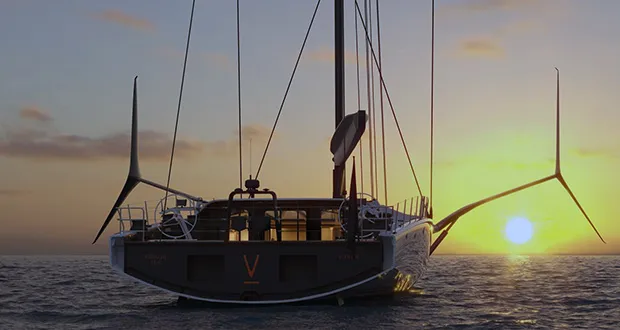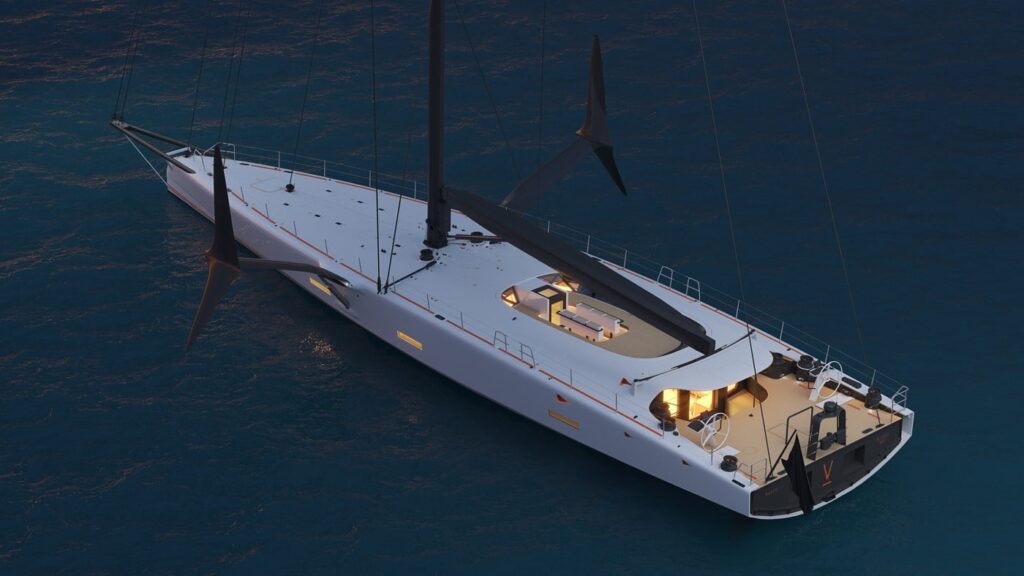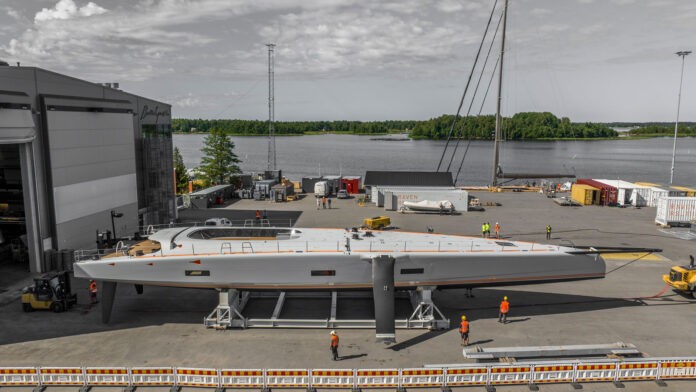The 34-metre custom Baltic 111 superyacht has been sent out on sea trials after launching from Baltic Yachts’ facility in Jakobstab, Finland, last month. Named Raven, the performance model is currently undertaking preliminary trials without her foils.

Raven is designed as a foil-assisted, ultra-lightweight superyacht and will be used primarily for day sailing while also being equipped to undertake high-speed, long-distance passages. First images reveal a curved, beak-like bow, two T-shaped foils and an eight-metre-long tubular bowsprit. She has been described as “one of the most extreme yachts [Baltic Yachts] has ever built,” by the shipyard.
Weight saving was central to the yacht’s design and she has been custom built with the lightest possible carbon and Nomex combination. Naval architecture and engineering are owed to Botin Partners and PURE Design respectively, who have both designed for the America’s Cup, with the overall design concept by Jarkko Jämsen.
Her stability and lift come from two large T-shaped hydrofoils mounted on hydraulically controlled side arms, capable of supporting some of the boat’s displacement. With a target displacement of 55 tons, Raven marks an ambitious next step for the shipyard, with their recent launch Zemi displacing 95 tons.

Key to her design is an unusual cockpit structure likened to that of a bird’s nest with Perspex set in crisscrossed carbon-composite mullions that creates an inverted observation dome. Further weight saving is achieved by minimising the amount of caulking between each pane and replacing some of it with a foam fillet. The cockpit is also able to convert to a semi-covered, hardtop seating area, courtesy of the clam-shell style forward section.
Despite her unconventional form, Raven’s rig and sail plan is similar to that of a conventional performance maxi with a single Southern Spars carbon mast and a suite of North Sails 3Di sails. Particular attention was given to the mainsail sheet track because Raven will be sailing most of the time with a wind angle forward of the beam. As a result, she sails not unlike a multihull with the main sail almost permanently sheeted home and trim adjustments made by moving the mainsheet car along its track.
Accommodation will be for four guests across two cabins, plus an owner’s cabin aft that includes a large double centreline berth that folds up against the interior bulkhead when racing. Jarkko Jämsén opted for a distinctive, industrial aesthetic for the interiors, featuring minimalist, but most importantly lightweight, rattan deckhands alongside exposed carbon.
Raven’s economical design extends even to the shower doors, which have been reduced from 13.5kg-per-metres-square to just 2.3kg-per-metres-square. To this same end, some custom parts have been 3D-printed in-house, including the clips which hold the carbon tubular accommodation framework in place.
“Raven doesn’t fall easily into a category, but if I had to place her, I’d say she’s the equivalent of a high-end supercar,” said project manager Garth Brewer of A2B Marine Projects. “The boat is primarily for pure enjoyment and the owner likes the challenge of doing something that hasn’t been done before.”
Raven will be powered by twin Yanmar generators and a Swiss Phi-Power AG electric propulsion motor. The drive train is completed by a retractable propeller designed with carbon blades and a titanium hub.
Full specifications on speed and range have not yet been disclosed.






